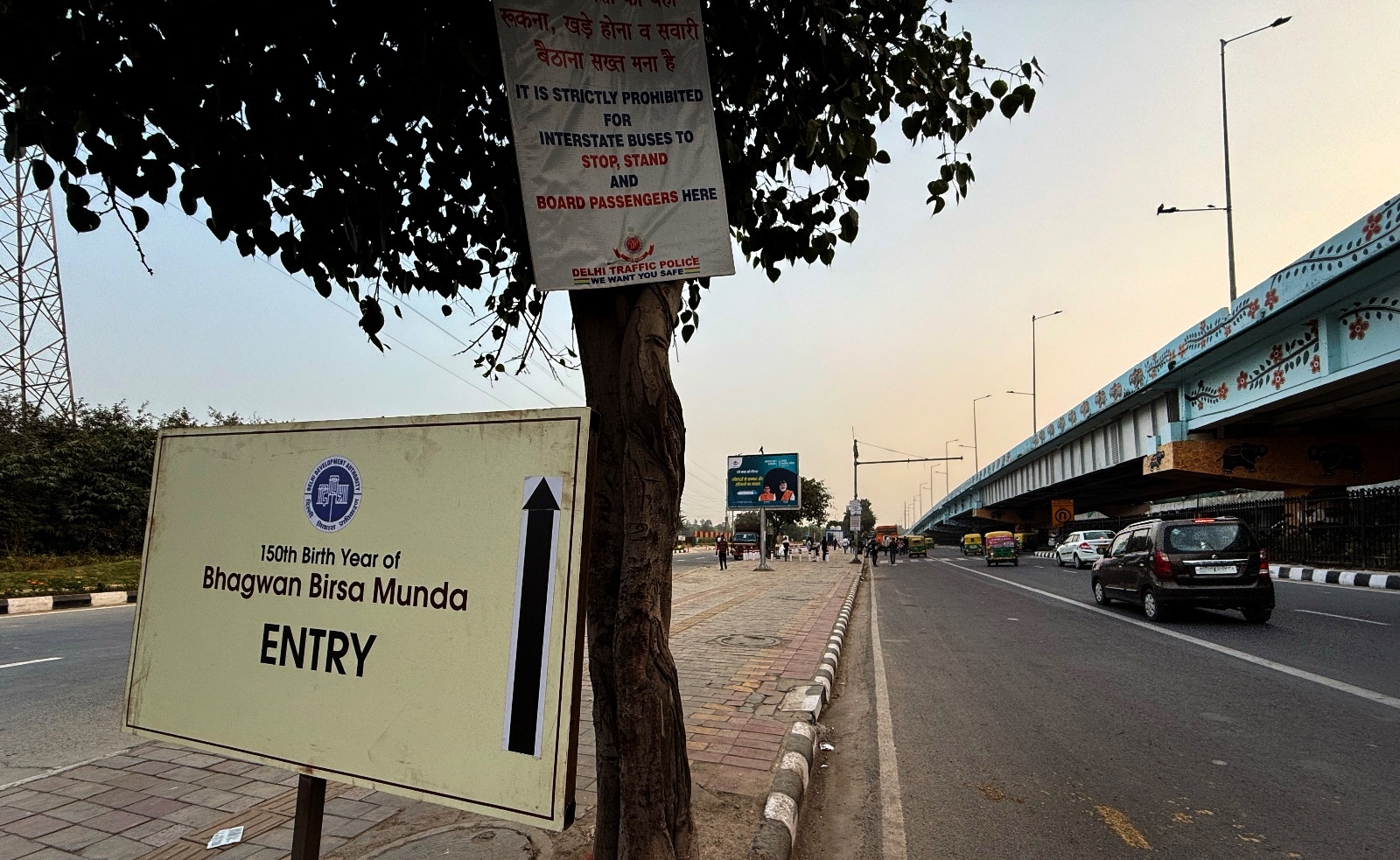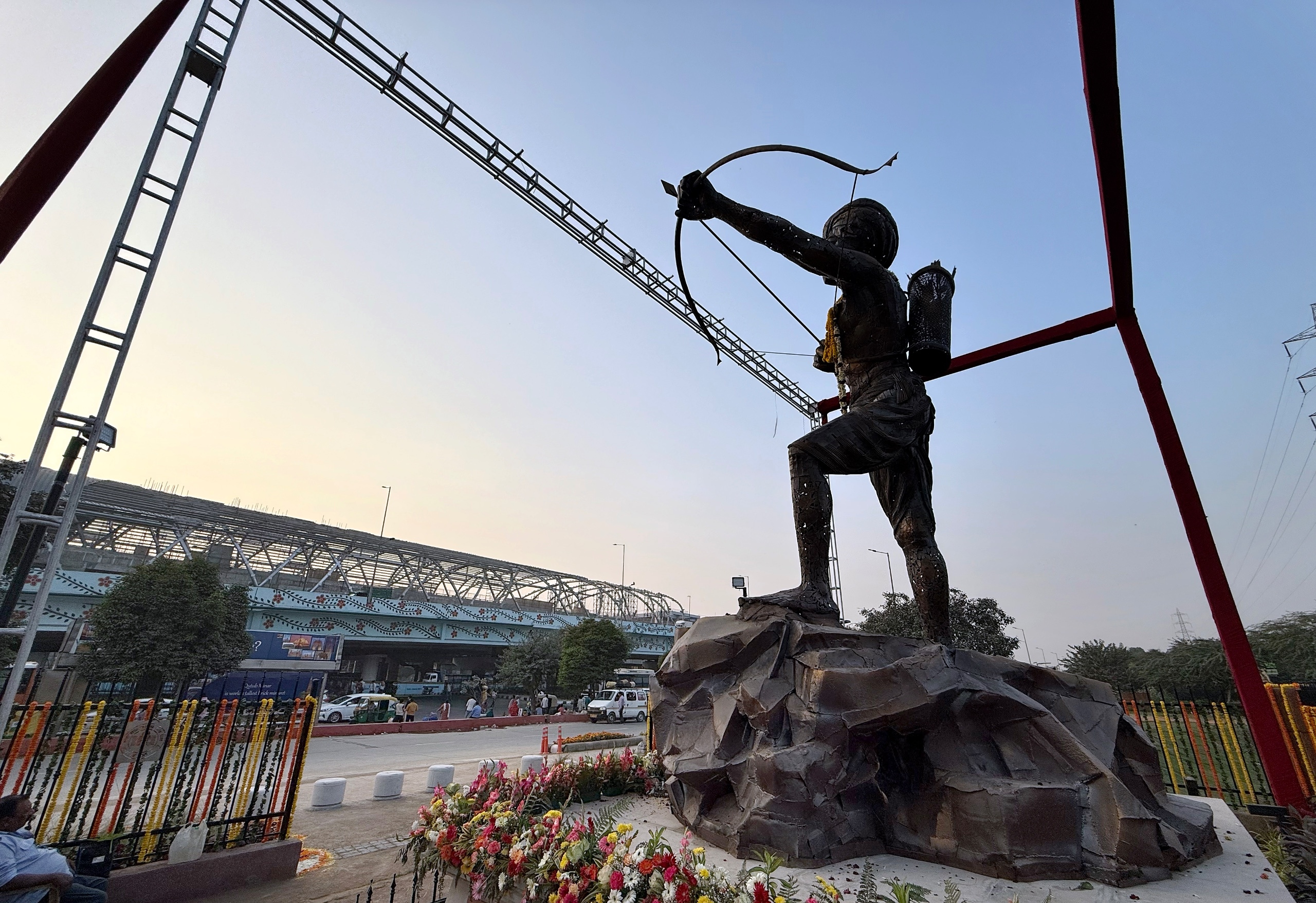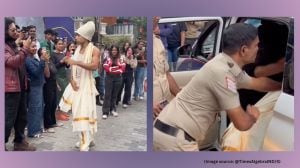Tracing the history of Sarai Kale Khan: Gujjar stronghold to Bhagwan Birsa Munda Chowk
In the present day, the urban village of Sarai Kale Khan is still dominated by Gujjars. But their version of the area’s history differs.
 A popular folktale from the area goes that the Gujjars of Khanpur saved a royal retinue from being attacked on the way to Nizamuddin dargah and the king awarded them land near the dargah to protect all those who travelled on the route. (Express Photo by Praveen Khanna)
A popular folktale from the area goes that the Gujjars of Khanpur saved a royal retinue from being attacked on the way to Nizamuddin dargah and the king awarded them land near the dargah to protect all those who travelled on the route. (Express Photo by Praveen Khanna)A bastion of Gujjar-dominated villages boasting fierce warriors, with land spread out from Purana Qila in the Northwest to Taimoor Nagar in the South of what is now Delhi. Or a place of rest and recuperation for weary travellers? — Sarai Kale Khan is famous for many things but finding a mention of it in official government records is a tough task.
On Friday, the Sarai Kale Khan Chowk was renamed ‘Bhagwan Birsa Munda Chowk’, with Union Home Minister Amit Shah inaugurating the tribal cultural icon’s statue on the occasion of his 150th birth anniversary year.
Zafar Hasan, in his exhaustive work, List of Muhammadan and Hindu Monuments, Volume IV, mentions Sarai Kale Khan being situated in a village named Bahlolpur Bangar. He wrote, “The sarai of Kale Khan which is constructed of rubble masonry was originally surrounded by arched cells, with their outer walls crowned by battlements. Most of these cells have now fallen down, and the rest which stand are used by villagers as residential houses. It is said to have contained a gateway on the north and west, but both of them have disappeared.”
 In the present day, the urban village of Sarai Kale Khan is still dominated by Gujjars. (Express Photo by Praveen Khanna)
In the present day, the urban village of Sarai Kale Khan is still dominated by Gujjars. (Express Photo by Praveen Khanna)
Maulvi Hasan also mentioned a tomb 150 yards from the sarai, constructed of plaster and rubble, which was in a dilapidated condition and contained no grave.
Who is the mysterious Kale Khan though? To unravel this, one must first understand where the sarai system came from.
In the chapter, Caravanserais Along the Grand Trunk Road in Pakistan, Saifur Rahman Dar points out in the book, The Silk Roads: Highways of Culture and Commerce, that no one knows when exactly the Grand Trunk Road was built. Precursor forms of the road existed during the time of Panini and Chandragupta Maurya, and repairs were undertaken under Sher Shah Suri’s rule.
During the arterial road’s reconstruction, Sher Shah Suri would emphasise the need to build rest stops for travellers. In his article, Sarais in Mughal India, history professor Nazer Aziz Anjum writes, “(Sher Shah Suri) initiated building of sarais on a large scale on routes basically for the need of state and partially for the need of wayfarers… it was during the Mughal period that work of building sarais was carried out on an extensive scale.”
Meanwhile, history presents three possibilities for the person behind the name — Mubarak Khan Lohani, whose eternal resting place in South Extension is named Kale Khan Gumbad; Kale Khan, a Sufi saint from the reign of Sher Shah Suri, whose tomb now rests near Delhi Airport’s Terminal 2; and Kale Khan, the spiritual advisor and friend of Mirza Ghalib, whose house Ahata Kale Khan still stands in Ballimaran’s Gali Qasim Jan.
Delhi chronicler and journalist R V Smith seemed to be equally baffled by the three men who shared the same name. However, he agreed that Sarai Kale Khan was likely named after Ghalib’s friend. “Kale Khan who built a sarai in Southeast Delhi was probably born in the early nineteenth century and lived on to see the Mutiny of 1857 and its aftermath,” writes Smith in his book, Delhi: Unknown Tales of a City.
 According to local Vicky Choudhary, Kale Khan was a peer and a sant, a devout Gaud Brahmin forced to convert to Islam to save his life. (Express Photo by Praveen Khanna)
According to local Vicky Choudhary, Kale Khan was a peer and a sant, a devout Gaud Brahmin forced to convert to Islam to save his life. (Express Photo by Praveen Khanna)
He explains further that Khan was probably born with another name, but received the nickname ‘Kale Khan’ because of his dark complexion.
Smith also mentions that Kale Khan would have probably witnessed the 1857 Mutiny since a snippet of history does emerge from the area just after the violence had died down. Gujjars pastoralists and farmers have long been settled in the area since the land near the Yamuna provided rolling grasslands for their cattle to graze on. However, in the short duration of lawlessness after the Mutiny, many local Gujjars from Sarai Kale Khan formed raiding parties and wreaked havoc on neighbouring villages.
In the present day, the urban village of Sarai Kale Khan is still dominated by Gujjars. But their version of the area’s history differs. According to local Vicky Choudhary, Kale Khan was a peer and a sant, a devout Gaud Brahmin forced to convert to Islam to save his life. “He was the one who made the sarai for travellers… in 1650, the Gujjar community from Khanpur shifted near the sarai… land was good and there were vast fields for the cattle to graze in,” he said.
Another popular folktale from the area goes that the Gujjars of Khanpur saved a royal retinue from being attacked by highwaymen on the way to Nizamuddin dargah from Mehrauli. Impressed by their act of bravery, the king awarded them land near the dargah to protect all those who travelled on the route and ensure the safety of those who spent the night in the sarai.












